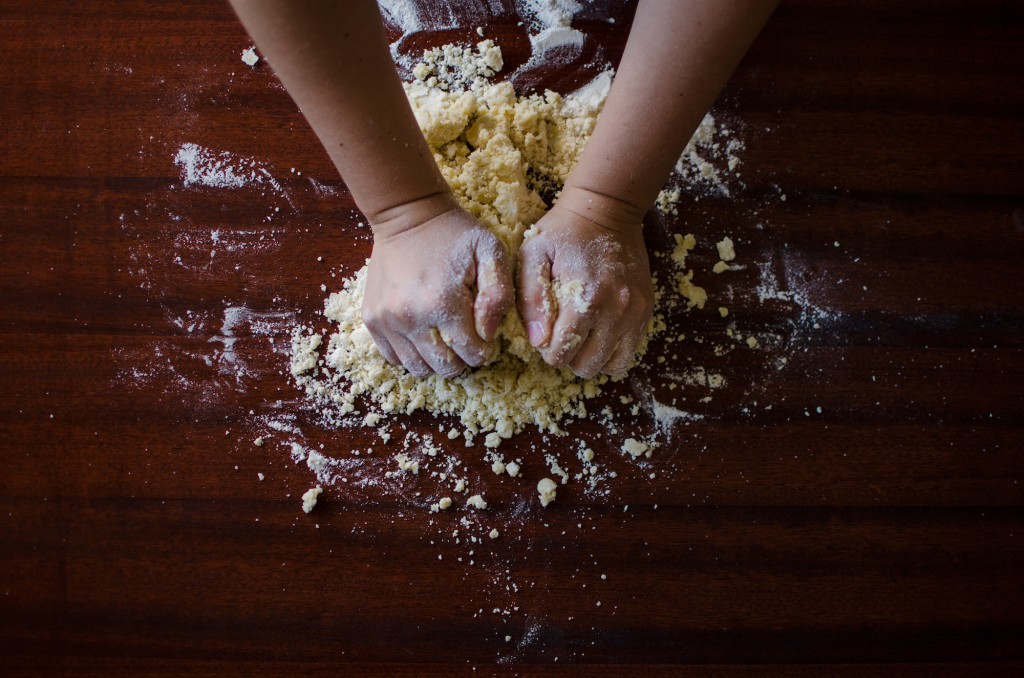Have you ever baked a loaf of bread, or witnessed a masterful baker at work? Through a mysterious process of beating, kneading, waiting, and baking, an unappealing, gluey mass of dough transforms into fragrant and delectable food. Freshly baked bread is one of the wonders of the civilized world.
Baking bread is eerily similar to the process of writing.
Bread making is a mystical combination of recipe and technique, mastery and luck. The result depends on factors you cannot see, such as microbial yeast organisms that coax the dough into rising and unseen protein molecules that create structure and “crumb.” The temperature of the room, conditions of the oven, gluten content of the flour, and the elevation above sea level all affect the results.
Despite these uncertainties, bakers manage to replicate their successes. They follow other bakers’ recipes or develop their own and master techniques for kneading, shaping, and baking the loaves they love best.
Bread recipes vary widely based on the flour used, the amount of time available, and the type of loaf you’re trying to create. Most share a basic structure, which looks like this:
- Assemble the ingredients
- Activate the yeast (or feed a sourdough starter)
- Beat and knead the dough
- Let it rise in the right conditions so the yeast does its magic
- Knead it a second time and shape it into loaves
- Let it rise yet again (the final proof)
- Bake, figuring out exactly when to remove the bread from the oven
(There’s another step—cooling—but who does that when there’s homemade bread in the kitchen?)
The process is rather long and ambiguous. From time to time, you go about your life, letting the bread work without you. Then you come back to punch and knead it, working hard. Then walk away again. And you hope it all turns out well in the end.
That sounds a bit like writing.
A Writing Recipe
Writing is much more than simply putting words on paper. The work begins when you start thinking about the project, and ends when you’re done revising and ready to publish. If you were to create a recipe for writing, from start to finish, it might look like this:
- Research. Gather the ingredients. For nonfiction works, you may delve deeply into external research. Fiction may require more introspection and exploration. The research phase often continues even as you are drafting, but at some point you have enough material to move on.
- Let the ideas incubate. Your brain is like the yeast organisms in bread dough, breathing life into the raw materials you’ve accumulated. Give it a chance to work.
- Structure the piece. Read through your notes and assemble a rough outline or other structure for your draft.
- Assemble the first draft. Dig in and create the first draft. You may have an unattractive mess when you’re done, but you’ll be on the path to something better.
- Rest before revision. Just as you would leave the bread dough alone to rise, let the first draft sit so you can get distance. “Not-writing” is an important stage of the process. Thoughts, phrases, different perspectives, and inspiration often strike as the draft rests.
- Revise and proofread. Revision is like the second kneading phase in bread making—vital to the quality of the result. You’ll wrestle with the piece from different angles, shaping it into its final form. A final proofreading is the finishing touch.
- Publish. Decide when it’s time to publish. Impatient as you may be for the final product, you don’t want to put your work out in the world half baked.
Why Bother with a Recipe?
Separating out the distinct steps of the process like this has significant benefits.
Time management: It’s easier to set reasonable deadlines and juggle concurrent projects when you understand and identify the different phases of the process.
Picking the right environment: Most of us need quiet surroundings, without interruption, to write the first draft. Research or revision can take place in open office environments or while riding on a train. And incubation often happens away from the desk altogether, while our minds can wander. When you isolate the steps of the writing process, you can align your surroundings with the work at hand.
Creativity: You’ll notice that the recipe outlined above has at least two periods of rest or incubation. Creative insight arrives on its own time, often when your brain isn’t completely focused on the task at hand. Schedule time for your inner Muse to process your thoughts, and you may be surprised by the insights that appear.
[This recipe is part of the book The Writer’s Process: Getting Your Brain in Gear]
Kneading image: Dreamy Pixel on Stocksnap.io.
Bread image: Mike Keanneally on Stocksnap.io

